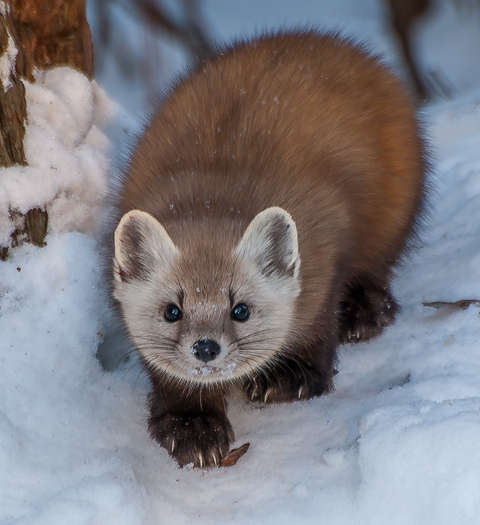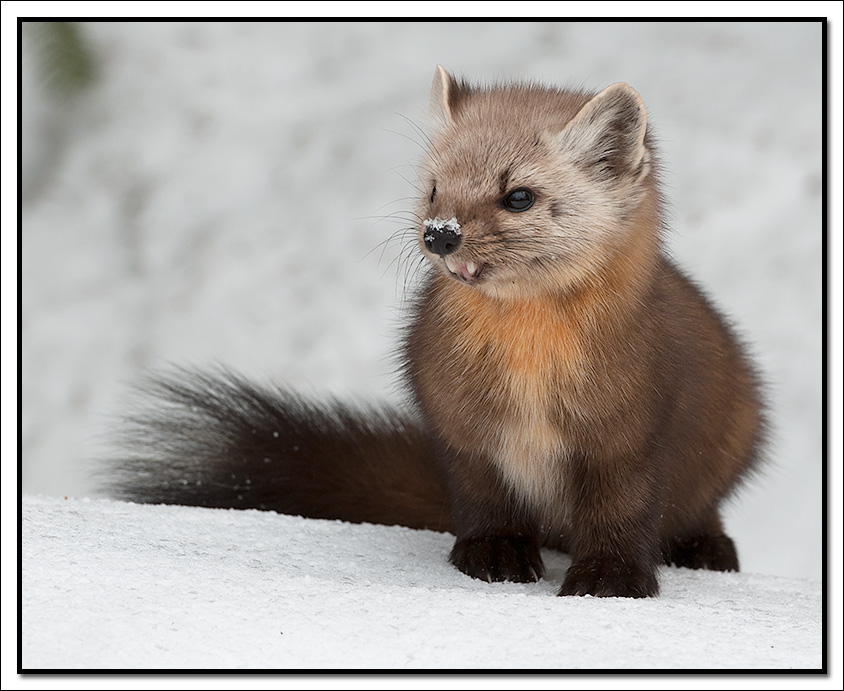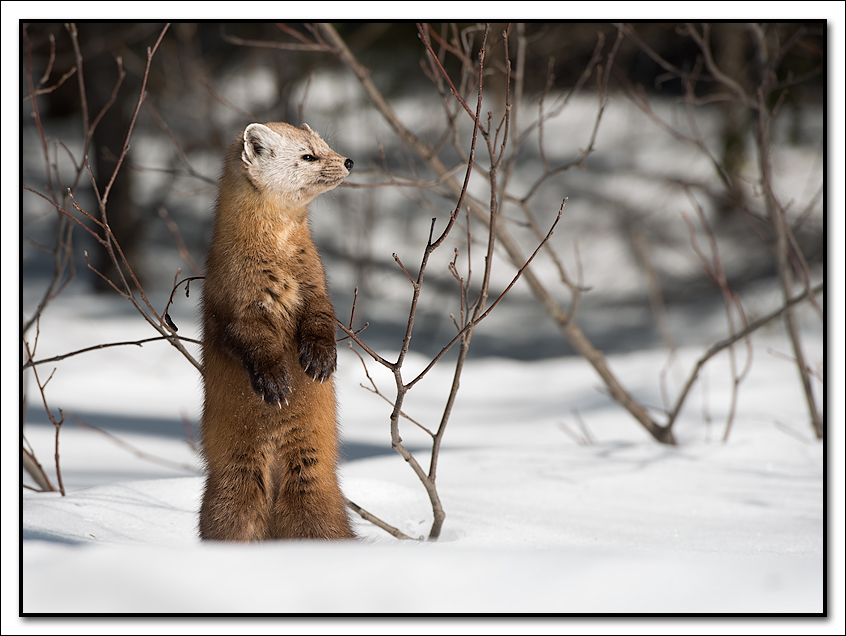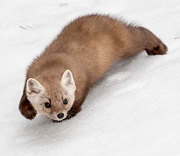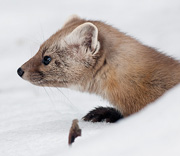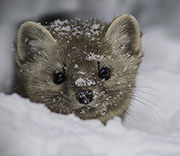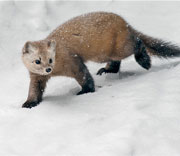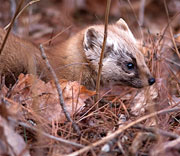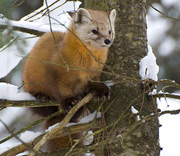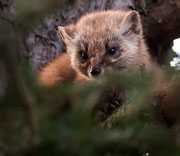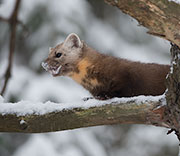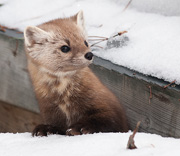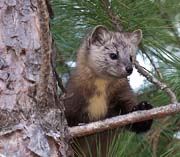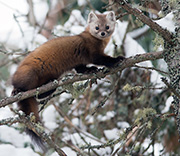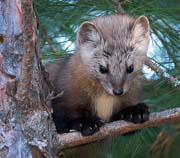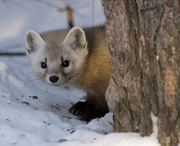
Marten (Martes americana)
Pine Martens have such a cute face, we often forget that they are fierce predators. Martens are agile tree climbers but are just as comfortable on the ground. They are members of the weasel family and are about the size of a domestic cat but with smaller legs, slender body and a bushy tail. They have curved claws that help them to climb easily and move swiftly through the trees. Their head is wide and tapers to a pointed nose with black eyes and big, rounded ears.
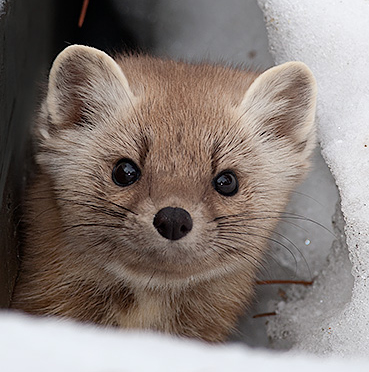 Pine Martens are very quick and have great reflexes making them very hard targets for predators. However, to their detriment, they have a beautiful luxurious fur that is marketed as American sable and generally commands a high price. Since they are curious and daring, they can easily fall victim to traps and were heading towards extinction during the mid 20th century.
Pine Martens are very quick and have great reflexes making them very hard targets for predators. However, to their detriment, they have a beautiful luxurious fur that is marketed as American sable and generally commands a high price. Since they are curious and daring, they can easily fall victim to traps and were heading towards extinction during the mid 20th century.
Another problem is that they prefer old growth coniferous forest and with the amount of undisturbed forest continually diminishing, their numbers continue to be low.
Other than for a few weeks during the mating season, Martens are solitary animals. Adults maintain ranges where they hunt voles, mice, hares, grouse, squirrels and shrews. They will also take other birds, bird eggs, frogs, snakes, insects, carrion, berries and nuts. Most hunting occurs at dusk and dawn, when prey species are most active. Although they are considered tree dwellers, they generally do their hunting on the ground. In addition, these animals are accomplished swimmers and can even swim under water. American martens do not hibernate and are active all winter. They don’t store food for winter month so they are always on the hunt, searching for food
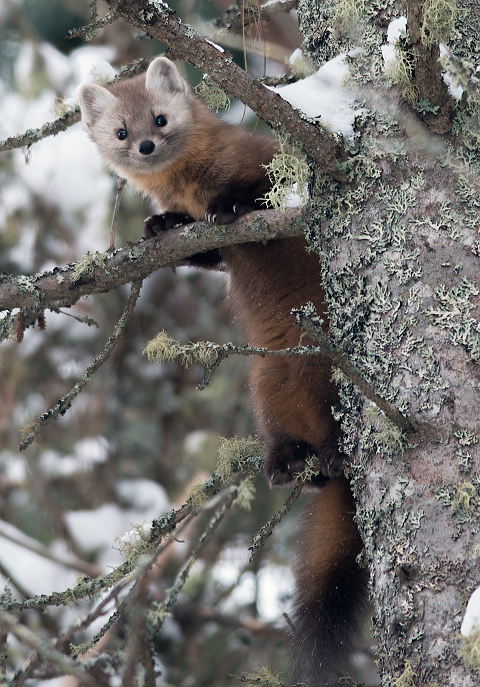 American martens are widespread around northern part of North America. There is also a European Pine Marten (Martes martes) with a range of mainland Europe and into the West of Asia including Russia.
American martens are widespread around northern part of North America. There is also a European Pine Marten (Martes martes) with a range of mainland Europe and into the West of Asia including Russia.
Our experience with Pine Martens has been in Algonquin Park. We have occasionally seen them in forest as they hunt in trees and on the forest floor. Because of their secretive lifestyle, these sightings are rare. And when we do see them, it is a fleeting moment as they don't sit still in clear view for too long. We have seen them chasing one of their favourite prey, the Red Squirrel.
A few Martens have become opportunist during the winter months and can sometimes be seen at the park’s bird feeders and in the campgrounds.
